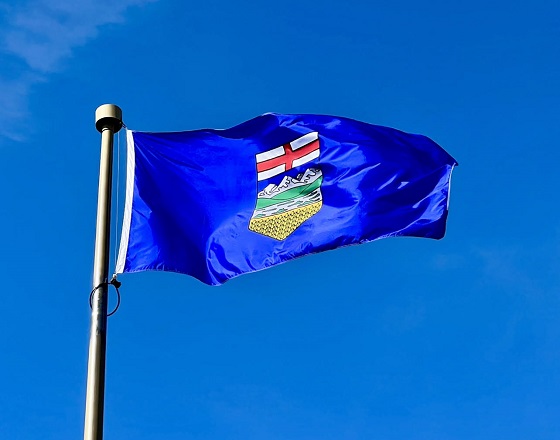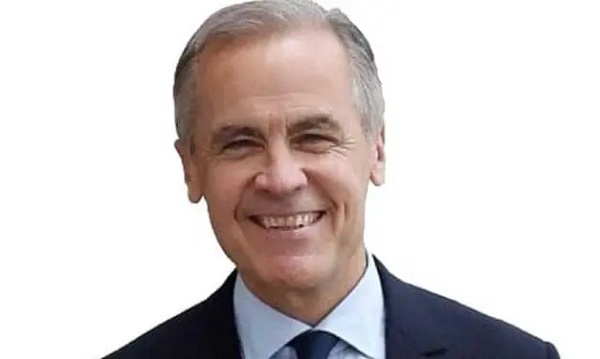Alberta
Alberta government should pay dividends to Albertans from Heritage Fund

From the Fraser Institute
By Tegan Hill and Joel Emes
Despite promising in February to rebuild the Heritage Fund to help eliminate Alberta’s reliance on resource revenue, last month Alberta Premier Danielle Smith said she plans to use income from the fund to “assist in de-risking projects” in the oil and gas sector (in other words, projects that can’t secure financing from private lenders). Clearly, if Alberta has any hope of building up the Heritage Fund, it needs robust fiscal rules to help ensure governments responsibly grow the fund—and don’t raid it for other purposes.
The Lougheed government created Alberta’s Heritage Fund in 1976 to save a share of the province’s resource revenue for the future. Since its creation, however, governments have only contributed resource revenue in 11 out of 48 years of the fund’s existence, and just 3.9 per cent of total resource revenue has been deposited in the fund over its lifetime. Instead, governments have largely spent away onetime resource revenues, contributing to Alberta’s boom-and-bust cycle, rather than saving a share of resource revenue to turn it into a financial asset that can generate steady income over time.
While Premier Smith says she wants to build up the fund so its investment income (i.e. earnings) can eventually replace resource revenue in the budget, the fund’s earnings in 2023/24 are a projected $2.1 billion compared to a projected $19.4 billion in resource revenue. Obviously, Alberta needs a new approach to grow the fund. On this front, it can look to Alaska’s experience with its Permanent Fund, which was also created in 1976 but has grown much larger over time.
Unlike Alberta’s Heritage Fund, Alaska’s fund operates under robust fiscal rules. First, according to Alaska’s constitution, the state government must deposit at least 25 per cent of all mineral revenues into the fund each year. Alberta could introduce a similar constitutional rule.
In addition, a share of the Alaska fund’s earnings are set aside each year to ensure that the principal of the fund is not eroded through inflation. Alaska also prohibits use of the principal without approval by a referendum; the government may only spend the earnings of the fund (minus what’s needed to inflation-proof the principal).
And crucially, there’s the dividends—a topic that would surely pique the interest of many Albertans. In Alaska, the government pays a share of the fund’s earnings to Alaskan citizens via a dividend, which has helped support growth in the fund over the long term. By giving citizens an ownership share in the state’s resource fund, Alaskans recognize their vested interest and demand that the state maximize returns. Put simply, due to the annual dividend, Alaskans want the government to maintain the Permanent Fund’s health. And any government that tried to use the fund for irresponsible purposes would face the ire of Alaskan voters.
Which brings us back to Alberta. If the Smith government began contributing 25 per cent of resource revenue to the Heritage Fund and inflation-proofing the principal this year, it could pay each Albertan a dividend worth between $148 to $297 in 2024/25, equivalent to $594 to $1,187 per family of four. From 2024/25 to 2026/27, each Albertan could receive a total of $571 to $1,108 in dividends, equivalent to $2,284 to $4,430 per family of four. And as the fund grows, so would the dividends.
The Smith government has promised to rebuild the Heritage Fund, yet at the same time wants to use the fund’s earnings to “assist in de-risking” energy projects in the province. Without a mechanism to ensure growth of the fund, it will remain vulnerable to the whims of governments. Alberta should learn from Alaska’s success and start paying annual dividends to Albertans.
Authors:
Agriculture
Lacombe meat processor scores $1.2 million dollar provincial tax credit to help expansion

Alberta’s government continues to attract investment and grow the provincial economy.
The province’s inviting and tax-friendly business environment, and abundant agricultural resources, make it one of North America’s best places to do business. In addition, the Agri-Processing Investment Tax Credit helps attract investment that will further diversify Alberta’s agriculture industry.
Beretta Farms is the most recent company to qualify for the tax credit by expanding its existing facility with the potential to significantly increase production capacity. It invested more than $10.9 million in the project that is expected to increase the plant’s processing capacity from 29,583 to 44,688 head of cattle per year. Eleven new employees were hired after the expansion and the company plans to hire ten more. Through the Agri-Processing Investment Tax Credit, Alberta’s government has issued Beretta Farms a tax credit of $1,228,735.
“The Agri-Processing Investment Tax Credit is building on Alberta’s existing competitive advantages for agri-food companies and the primary producers that supply them. This facility expansion will allow Beretta Farms to increase production capacity, which means more Alberta beef across the country, and around the world.”
“This expansion by Beretta Farms is great news for Lacombe and central Alberta. It not only supports local job creation and economic growth but also strengthens Alberta’s global reputation for producing high-quality meat products. I’m proud to see our government supporting agricultural innovation and investment right here in our community.”
The tax credit provides a 12 per cent non-refundable, non-transferable tax credit when businesses invest $10 million or more in a project to build or expand a value-added agri-processing facility in Alberta. The program is open to any food manufacturers and bio processors that add value to commodities like grains or meat or turn agricultural byproducts into new consumer or industrial goods.
Beretta Farms’ facility in Lacombe is a federally registered, European Union-approved harvesting and meat processing facility specializing in the slaughter, processing, packaging and distribution of Canadian and United States cattle and bison meat products to 87 countries worldwide.
“Our recent plant expansion project at our facility in Lacombe has allowed us to increase our processing capacities and add more job opportunities in the central Alberta area. With the support and recognition from the Government of Alberta’s tax credit program, we feel we are in a better position to continue our success and have the confidence to grow our meat brands into the future.”
Alberta’s agri-processing sector is the second-largest manufacturing industry in the province and meat processing plays an important role in the sector, generating millions in annual economic impact and creating thousands of jobs. Alberta continues to be an attractive place for agricultural investment due to its agricultural resources, one of the lowest tax rates in North America, a business-friendly environment and a robust transportation network to connect with international markets.
Quick facts
- Since 2023, there are 16 applicants to the Agri-Processing Investment Tax Credit for projects worth about $1.6 billion total in new investment in Alberta’s agri-processing sector.
- To date, 13 projects have received conditional approval under the program.
- Each applicant must submit progress reports, then apply for a tax credit certificate when the project is complete.
- Beretta Farms has expanded the Lacombe facility by 10,000 square feet to include new warehousing, cooler space and an office building.
- This project has the potential to increase production capacity by 50 per cent, thereby facilitating entry into more European markets.
Related information
Alberta
Alberta Next: Alberta Pension Plan

From Premier Danielle Smith and Alberta.ca/Next
Let’s talk about an Alberta Pension Plan for a minute.
With our young Alberta workforce paying billions more into the CPP each year than our seniors get back in benefits, it’s time to ask whether we stay with the status quo or create our own Alberta Pension Plan that would guarantee as good or better benefits for seniors and lower premiums for workers.
I want to hear your perspective on this idea and please check out the video. Get the facts. Join the conversation.
Visit Alberta.ca/next
-

 Alberta2 days ago
Alberta2 days agoAlberta uncorks new rules for liquor and cannabis
-

 Energy22 hours ago
Energy22 hours agoB.C. Residents File Competition Bureau Complaint Against David Suzuki Foundation for Use of False Imagery in Anti-Energy Campaigns
-

 COVID-1921 hours ago
COVID-1921 hours agoCourt compels RCMP and TD Bank to hand over records related to freezing of peaceful protestor’s bank accounts
-

 Crime2 days ago
Crime2 days agoProject Sleeping Giant: Inside the Chinese Mercantile Machine Linking Beijing’s Underground Banks and the Sinaloa Cartel
-

 International1 day ago
International1 day agoTrump transportation secretary tells governors to remove ‘rainbow crosswalks’
-

 C2C Journal19 hours ago
C2C Journal19 hours agoCanada Desperately Needs a Baby Bump
-

 Alberta1 day ago
Alberta1 day agoAlberta Next: Alberta Pension Plan
-

 Business1 day ago
Business1 day agoCarney’s spending makes Trudeau look like a cheapskate





